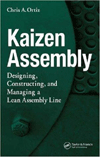Equipment manufacturers are increasingly switching from point-to-point wiring to connector-based cable assemblies for factory automation and control systems. Adopting this strategy has improved their unit costs and productivity. It allows them to turn around orders and complete installations much faster. The strategy benefits their customers, too, reducing their total cost of ownership over the service life of the machine.
Today’s connector lineup includes more user-friendly and application-specific choices that can further enhance reliability and convenience. Connectors offer excellent mechanical stability and are available with multiple termination options. They can be designed to prevent ingress, resist vibration and temperature extremes, and withstand harsh weather.
Most rectangular connectors are modular and user-configurable. With various inserts, they can be configured to accommodate different voltages—for example, signal and power—or combinations of different transmission media, such as power, signal, optical fiber, coax, D-sub and pneumatic lines. Recent innovations, such as quick-lock termination, click-and-mate assembly and twist-top locking, make installation and maintenance fast and simple.
Most industrial equipment contains extensive electrical wiring between its components and subsystems. When the equipment is manufactured, the machine builder typically assembles and tests it at the plant, disassembles it for shipping, and reassembles it at the customer’s location. With hardwiring, this means each connection must be individually unmade for shipping and then remade when setting up at the customer. That’s labor intensive. If wiring errors occur during final setup, equipment could be damaged upon startup. At a minimum, such errors will result in further delays and additional expense to diagnose and correct.
Using connectors makes wiring up a machine a pre-engineered job. Wiring can be designed, assembled and tested as a harness and then quickly integrated into a machine or system as it takes shape. Some time is invested in assembling the harness, but then installation only takes a fraction of the time hardwiring requires. The risk of wiring errors is virtually eliminated.
Connectors Mean Flexibility
The growing popularity of connectors complements the shift to modular machine design. Modularization offers significant efficiencies and economies over the traditional unitary design approach. Standard components, such as control panels, motor assemblies and power distribution boxes, can be prebuilt, pretested then plugged together in the final assembly with connectors.
Here’s an example of how modular design and connectors can make a product better for both the OEM and the user: A French builder of industrial ink-jet printing machines increased its market share while lowering production costs by adopting a modular design and employing connectors in place of hardwiring. Each machine has a printhead and control unit. Previously, fiber-optic cables, pneumatic hoses and electrical cabling were run through sheathing and hardwired to the printhead and other components, such as the ink dispenser. However, disengaging the printhead was a major undertaking. By integrating all these feeds in a modular connector, the printhead can now be detached and reattached quickly for faster assembly and maintenance.
The same advantages apply to an entire plant layout. Plant engineers are familiar with using a communication bus with drops coming off a main trunk cable. Power and control signals for motors can be distributed the same way, using connectors. Installing or replacing a motor thus becomes a plug-and-play operation, with little downtime or risk of wiring errors.
Savings on the Shop Floor
Premaking wiring assemblies with connectors allows for precise, repeatable measurement of cable lengths. Connector-based wiring harnesses can be assembled by lower-paid staff or a contractor rather than by an electrician, which also saves cost. With installation, the harnesses require little if any of the rigid or semirigid conduits that protect point-to-point wiring from damage. Since power and signal needs often vary within a machine, a single connector can be configured to accommodate different DC voltages or both AC and DC power. The alternatives, such as mounting multiple terminal blocks inside a control cabinet, require additional labor and materials and take up more space.
Another example of how connectors can save money is our new Han-Yellock connector, which only requires male crimp contacts. Conduction between contacts is made by multipliers. One electrical feed can supply up to five contacts. This enables the connector to perform the multiplier function previously done by terminal blocks inside the machine. The connector housing can be populated from either side, so the entire connector interface—hood and housing—can be mounted from the outside once the machine is fully built. That means the connector can be mounted by an installer rather than an electrician, which saves money.
With modular design and connector-based wiring, the machine can be shipped to the customer in smaller pieces, reducing transportation costs and the risk of damage. Faster field assembly with much less risk of wiring errors translates into major cost savings for the OEM. Troubleshooting and maintenance are similarly accelerated. During the warranty period, that’s a cost benefit to the OEM and a benefit to the end-user in the form of reduced downtime during scheduled and unscheduled maintenance.
Hardwiring: The Cost Myth
Given these advantages, why do some OEMs still use hardwired connections? For some, the thought of changing their manufacturing process is daunting. Others may not fully appreciate the cost of assembling a hardwired system in the field. They say connectors are an additional item on the bill of materials, and their customers buy solely on the basis of the lowest sticker price.
Yet most OEMs that compare their use of hardwiring and connectors find that connectors save them time and money, particularly when the full cost of making hardwired connections is recognized. Unlike connector-based
wiring, in which most costs are incurred up-front, the costs associated with hardwiring are recurrent and often unpredictable, because of the possibility of wiring errors.
Each manufacturer has different labor and overhead costs, but a time study done by one company determined its fully allocated cost for hardwiring each pair of connection points on a complex piece of equipment was about $80, if done in-house. Experience shows that whatever a company’s costs for hardwiring in-house, there is about a 30 percent premium to make such connections in the field, for installations or for warranty service and repairs.
Many OEMs echo what these North American companies found after switching to connectors:
A manufacturer of paper conveyors for commercial printing presses had been hardwiring more than 200 wires to the control box of each unit prior to final testing. This process could take up to four workdays per unit. Switching to six modular connector assemblies in a plug-and-play solution reduced that by as much as 2.5 days. The connectors cost $1,400 per unit, but the savings of $3,500 in labor and time costs enabled the company to increase its production rate.
A manufacturer of large, material handling cranes takes each one apart for shipment to the customer where it is reassembled. Transitioning from hardwiring to hybrid connectors cut field installation time from weeks to a mere 3 to 4 hours. Through the initial setup in the field, the manufacturer calculated its all-in cost using connectors was, on average, $622 less ($12,540 for connector-based wiring, $13,162 for hardwiring). However, when hardwiring errors happened during installation, the cost doubled to $26,325, for total savings using connectors of about $13,000.
A builder of large, automated welding machines was hardwiring more than 300 contacts per unit. It took a week to build and test one, then several days to dismantle it, and another week to reassemble it at the customer’s location. Switching to pluggable connectors cut wiring time dramatically, saving extensively on labor cost. Now, each step that used to take a full week is being done in less than a day.
A producer of conveyors for the food and beverage sector needed to design an IP67-compliant product that could withstand harsh conditions, such as wash-downs. Adopting a connector-based assembly allowed the company to reduce install time and maintenance downtime and increase the throughput of the conveyor by 15 percent. The cost savings went directly to the bottom line.
A maker of acoustic microscopes for analyzing the integrity of semiconductors was planning a new model
requiring 120 leads of varying voltages. The goal was a machine with a small
footprint, but engineers ran out of interior space for such an elaborate power distribution. By switching to two heavy-duty connectors with 60 pins each, they were able to streamline interior wiring, achieving the desired footprint and saving money. Internal wiring bundles were eliminated and less metal paneling was required.
The Right Connector
Today’s connector portfolio offers engineers unrivaled flexibility. Connectors are available in different sizes, made from a range of coated and uncoated metals and plastics, with different cable entry angles and termination technologies. There are models created for specific design objectives, such as slim models to fit in tight spaces. Many rectangular connectors offer simple termination options that can be performed quickly, easily and safely by installers rather than electricians, using common tools like a screwdriver.
Usually, there are multiple options for each job, allowing the OEM to determine the appropriate combination of capability, convenience, price and even aesthetics.
Harting invented and popularized the rectangular connector in the 1950s and is a leading global supplier of heavy-duty industrial connectors. Rectangular and square connectors are more scalable, configurable and customizable than round ones.
For example, our Han-Modular system allows customers to build a custom connector with standard catalogue components. With more than 40 inserts to choose from, the connector facilitates the creation modular machine designs. These inserts are designed to carry specific power, signal or data loads, as well as other transmission media, including optical fiber, D-sub, coax and air lines. The connector also withstands challenging ambient conditions, such as dirt, dust, humidity, large temperature swings, sunlight, tension and vibration. Modules can accommodate currents from a few milliamps to 200 amps, voltages up to 5,000 volts, and shielded bus signals.
More and more connectors are being designed for special situations. These are based on standard connector products, but optimized for particular operating conditions or requirements, such as harsh weather, extreme heat, corrosive environments, high voltages, or electromagnetic protection. There are models enhanced for high mating cycles in prototyping and testing scenarios, as well as stainless steel models for hygienic applications, such as food or pharmaceutical production. These and other specialty versions come in standard sizes, and can generally replace standard connectors without modifications to the design of the machine.











